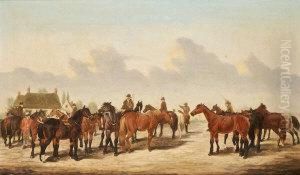William Henry M. Turner Paintings
Joseph Mallord William Turner, known more commonly as William Turner or by his initials J.M.W. Turner, was born on April 23, 1775, in Covent Garden, London, England. He was a seminal figure in British art, particularly known for his expressive colourisations, imaginative landscapes, and turbulent, often violent marine paintings. Turner was considered a controversial figure in his day, but he is now regarded as the artist who elevated landscape painting to an eminence rivalling history painting. Despite his professional success, Turner's personal life was considered eccentric by the standards of the time. He had few close friends, never married, although he had relationships, and lived increasingly as a recluse. Turner died on December 19, 1851, in Chelsea, London, and he left a vast legacy that profoundly influenced the Romantic era of painting.
Turner's early life was marked by hardship. His mother, Mary Marshall, became increasingly mentally unstable before her death in 1804, and his father, William Gay Turner, a barber and wig maker, supported his son's artistic ambitions. Turner showed prodigious talent from a young age, enrolling at the Royal Academy of Art schools in 1789, at the age of 14, and exhibiting his first watercolour there at 15. Throughout his career, Turner was a prolific artist, producing more than 550 oil paintings, 2,000 watercolours, and thousands of sketches and drawings.
He was renowned for his technical innovations in painting, notably his use of luminous colour to convey mood and atmosphere, a technique that prefigured Impressionism. Turner's fascination with the powers of nature was evident in works such as 'Snow Storm: Steam-Boat off a Harbour’s Mouth' and 'Rain, Steam, and Speed – The Great Western Railway', where he depicted natural forces as sublime and powerful, capable of overwhelming humanity's efforts to control them. His most famous works, such as 'The Fighting Temeraire' and 'Turner's Slave Ship', are celebrated for their vibrant use of colour, intricate detail, and evocative portrayal of the natural world.
Turner was also an astute businessman and managed his affairs meticulously, becoming wealthy from his art and investments. He was deeply protective of his work, often revising and reworking paintings and sketches throughout his life. In his will, Turner bequeathed a large collection of his paintings to the British nation, leading to the establishment of the Turner Bequest at the Tate Britain in London. Today, Turner's legacy is not only in his contribution to the Romantic movement but also in his influence on the course of Western art, inspiring generations of artists to explore the emotive potential of landscape.
